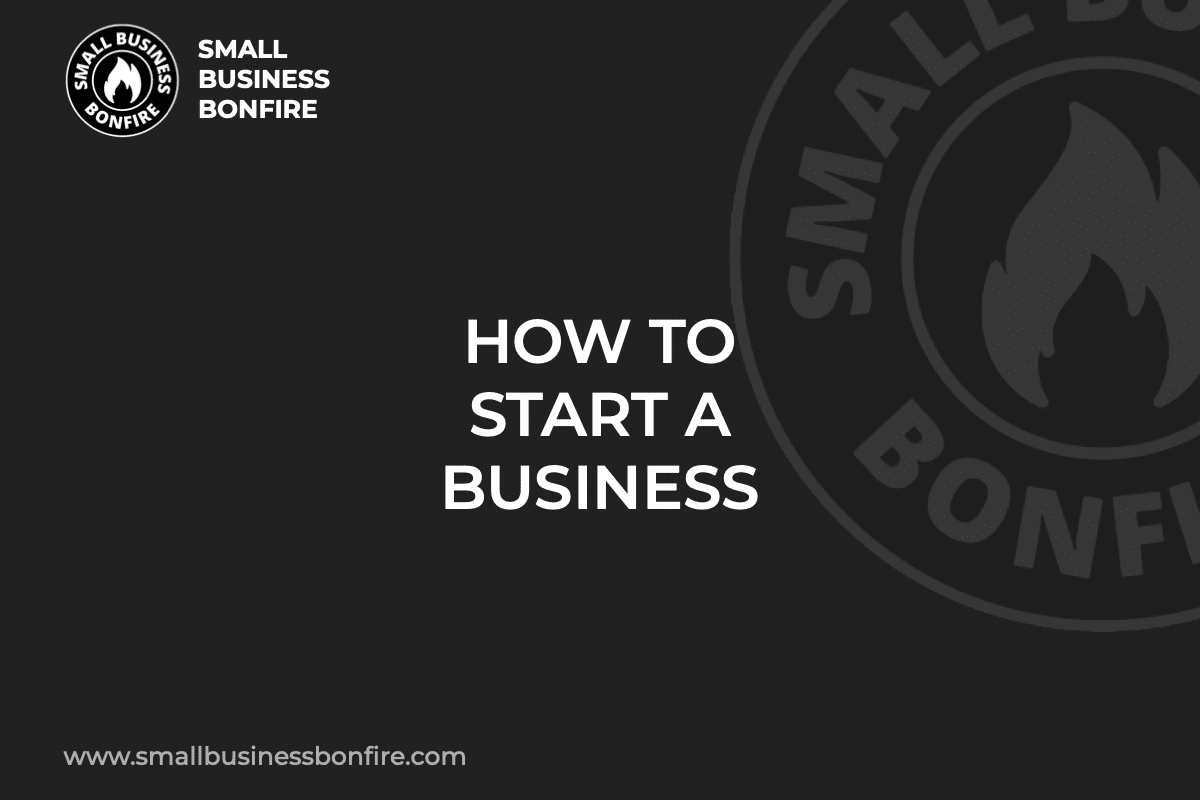Starting a business can often feel like navigating a labyrinth; trust me, I’ve been there.
With so much misinformation, it’s no wonder why 65% of businesses fail in the first ten years.
I’m AJ, and I’m here to lend a helping hand! I’ve grown and automated and exited several businesses.
Over that time, I’ve developed a step-by-step system (you can find below).
I developed SBB to help aspiring entrepreneurs (like yourself) do the same!
So let’s roll up our sleeves, dig deep, and get you on the path to the American dream!
Article Key Takeaways
- It's not enough to have a great idea. Execution is key in business.
- You don't need any fancy tools or professional help. Just grit and determination.
- Failure is a part of the process. Remember, if it were easy, everyone would be a millionaire.

1. Define Your Idea & Niche Down
To start your own business, you must clearly envision your business idea and the niche you want to target.
Trust me, starting the process by finding a well-defined niche will give you a better chance of success and ensure your new business idea (or online business idea) resonates with potential customers.
Step 1: Choose a Business Idea
When deciding what to pursue, choose something you excel at or address a particular problem in the market.
This way, you’ll have more drive and passion to bring your ideas to life. A business idea is great, but you must be ready to act on it. Don’t let your concept stay on paper!
Here are four essential things to think about:
- Figure out what you’re good at and passionate about (I prefer what you’re good at over passion)
- Identify problems or challenges that you’re motivated to solve
- Look into existing opportunities that match your skills and interests
- Get feedback from others to get valuable insights and different perspectives
This will help you make a more informed decision and narrow down the best business idea.
Step 2: Pick a Niche In that Market
Once your business idea is nailed down, it’s time to dig in further and target a niche.
This will help you stand out from the competition and allow you to hone in on more specific customer needs.
Remember this saying “The Riches are in the Niches.”
What is a Niche Market?
A niche market is a smaller segment of a larger market. It can be defined by your product or service, geography, lifestyle, or interests.
Think of it like this:
- Instead of offering a product for everyone, you focus on a specific type of customer.
- You provide tailored solutions for their needs and wants.
- You become an authority in that space.
- Boom! People buy from you because they trust you more than the general solution.
Targeting a niche market can create more meaningful customer relationships and improve your understanding of the industry and its needs.
Broad Market Example: Hiking Gear
Niche Market Example: Lightweight Hiking Backpacks
Ultra Niche Market Example: Light Weight Hiking Backpacks for Females
Who would you rather buy a light weight hiking backpack from, a company that ONLY offers lightweight hiking backpacks and has rigorously tested them, or The North Face?
Answer: The former.
How to Choose a Niche Market
Finding a niche market, is an essential step in the small business planning process.
Here are some tips to help you get started:
- Identify areas of opportunity that match your skills and interests
- Research existing markets to see if there’s enough demand for your product or service
- Segment customers into target groups based on demographics, lifestyle, interests, etc.
- Analyze the competition and see how you can stand out
By doing your research upfront, you can find a niche that offers less competition and more opportunity to succeed.
Niche Market Benefits
When you target a niche market, you can stand out and build a stronger brand.
The main benefits of targeting a niche include:
- Increased credibility in your field
- Easier access to new customers
- Cost savings on niche marketing efforts
- Opportunity for more personalized customer service
With a clear business idea and niche in mind, you’re on your way to starting a successful business.
Imagine trying to sell all hiking gear – standing out from the competition would be challenging.
But with a niche market like lightweight hiking backpacks for females, you can target a particular group of customers and better meet their needs.
Step 3: Clarify Tour Target Customers
Now that you’ve picked a business idea and a niche, it’s time to get specific about your target market.
Knowing who your ideal customer is will help you create products and services they’ll love and craft more effective marketing messages.
What is a Target Customer?
A target customer is a particular group most likely to buy your products or services.
They often have a need for your product or service and are more likely to invest in it.
They share specific characteristics, such as:
- Age
- Hobbies or Interests
- Lifestyle
- Location
- Buying Habits
How to Choose Your Target Customer
When choosing your target customer, start with a few key characteristics you think would best describe them.
Here are some tips to get you started:
- Consider the demographics of your ideal customer
- Research what interests and values they have
- Figure out what motivates them to buy products or services
- Determine where they spend their time online
By getting to know your target customer, you can create products and services tailored to their needs.
Action Item: Create a customer persona for the folks you’re targeting and give him/her a name.
Think about their demographics, likes, and interests and (most) importantly where they might be in the world.
At all of my businesses, we create customer porsona’s and give the person a name. It’s also fun to refer back to Jack from Utah! or Kelly from Colorado.
Where Should You Be At After Defining Your Idea & Niching Down?
- At this stage you have a clearly defined idea
- At this stage you have niche market you're going after
- At this stage you know (about) the customer demographics you're targeting
2. Research the Competition

Once you better understand your target customer, it’s time to look closely at the competition.
Many business owners make the mistake of assuming they know what their competition is doing. But it’s important to dive deep and research each competitor in detail.
You want to learn as much as you can about what they offer and how they do things differently from you.
Here are three steps you should take when researching the competition.
Step 1: Find All Competitors Going After Your Market
Start by searching for all the businesses in your niche.
Look at direct (same product or service) and indirect (similar products or services) competitors and those going after the same target customers.
Use Google to Find Business Competitors
Google is a great tool to use when researching your competitors.
Simply type in relevant keywords related to your small business, and you’ll be able to find out who’s already in the space quickly.
Using the example from before, if your business sells lightweight hiking backpacks specifically designed for women, you can search for the following:
- “lightweight hiking backpacks”
- “women’s hiking backpacks”
- “backpacks for women hikers”
Ask Friends & Family about Business Competitors
Another great way to find competitors is to ask your friends and family.
They may know of businesses you haven’t discovered yet or have valuable insights about what customers are looking for.
Or, even better, they may be customers of your competitors themselves.
Talk to Your Potential Customers about Business Competitors
It’s also important to talk directly to your potential customers.
This will allow you to get a better understanding of what they’re looking for, as well as how your competitors are meeting those needs.
Find ways to connect with potential customers, such as:
- connecting on social media
- attending networking events
- joining forums related to your industry
By getting feedback directly from your potential customers, you get first-hand knowledge of what they think about the competition instead of relying on assumptions.
Step 2: Conduct Primary & Secondary Market Research
Once you have a list of competitors, it’s time to dig deeper into their actions.
You can use various types of market research to do so. Primary and secondary research to gain insights into the competition.
Understand Your TAM, SAM & SOM
TAM, SAM, and SOM are acronyms for Total Addressable Market, Serviceable Addressable Market, and Serviceable Obtainable Market.
These terms help you determine the size of your target market and how much competition there is in the space.
- Total Addressable Market (TAM): the total potential demand for a product or service
- Serviceable Addressable Market (SAM): the segment of the TAM that your small business can serve
- Serviceable Obtainable Market (SOM): the portion of SAM where you have a competitive advantage
By understanding your TAM, SAM, and SOM, you can assess how much competition there is for your products or services.
Remember our previous example: you’re selling lightweight hiking backpacks tailored for adventurous women.
Now, let’s break it down:
- TAM – all hiking-loving ladies
- SAM – those craving lightweight backpacks
- SOM – the Oregon-based backpack enthusiasts
What is Primary Market Research?
Primary market research is gathering data directly from your potential customers.
Surveys, interviews, focus groups, and other methods of gathering data are all considered primary market research.
This type of market research is essential for getting to know your potential customers deeper.
What is Secondary Market Research?
Secondary market research is the process of gathering data from existing sources.
This includes websites, blogs, news articles, industry reports, and other online sources.
This type of research can be used to gain insights into trends in the industry, customer preferences, and what competitors are doing.
Step 3: Use a SWOT Analysis
Once you’ve gathered all the data, it’s time to analyze it.
A SWOT Analysis is a powerful tool to help you assess your small business.
What is a SWOT Analysis?
SWOT stands for Strengths, Weaknesses, Opportunities, and Threats.
This analysis focuses on the internal (strengths & weaknesses) and external (opportunities & threats) factors that affect your business.
- Strengths: areas where you have a competitive advantage
- Weaknesses: areas that need improvement or are lacking
- Opportunities: potential areas of growth and new markets to explore
- Threats: challenges, risks, and external factors impacting your business
By assessing these areas, you can determine what strategies to use for your business and how to stay ahead of the competition.
How to Use a SWOT Analysis
You can use a SWOT analysis in different scenarios, such as:
- starting a new business (duh)
- launching a new product or service
- entering a new market
- identifying sales opportunities
- adjusting your marketing strategies
A SWOT analysis is helpful in the situations mentioned above because it allows you to identify the areas where your business can succeed and where it needs improvement.
Using the data you’ve gathered from researching the competition, create a SWOT analysis for your business.
This will help you gain insights into what makes your business unique and how to stand out from the competition.
The best process here is to put the four categories listed above in a grid and start chipping away. If you’re honest with your internal & external surroundings, this should be eye opening!
Where Should You Be After Researching the Competition?
- At this stage you have a full list of competitors
- At this stage you have a "hit list" of specific competitors to watch
- At this stage you've started thinking about pricing strategies and features that differentiate your business
3. Prototype Your Business
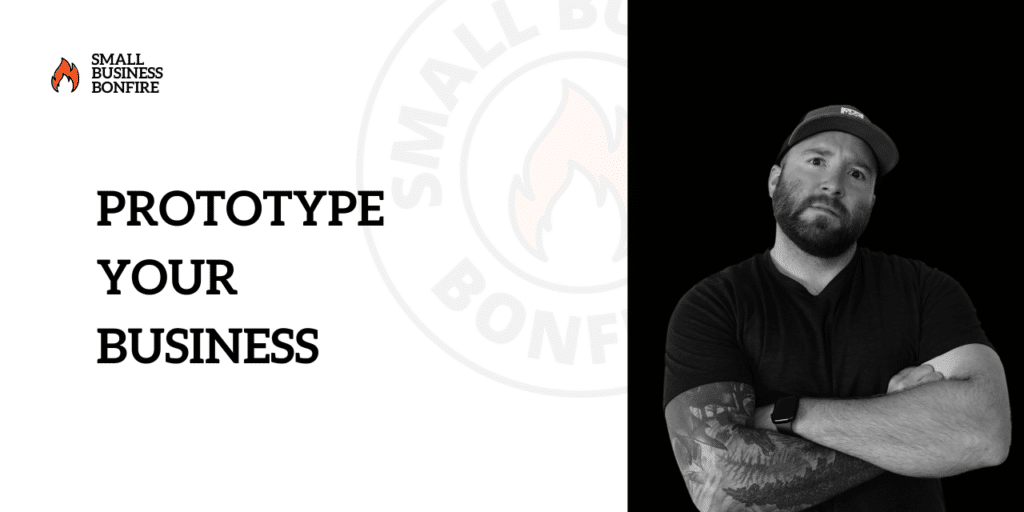
Once you’ve researched and understood the competitive landscape, it’s time to start prototyping your business.
Prototyping is creating a sample version of your product or service to test it out and get feedback from potential customers.
There are four steps to the prototyping process.
Step 1: Create a Business MVP (Minimum Viable Product)
The first step is to create a business Minimum Viable Product (MVP).
What is Lean Startup Methodology?
The Lean Startup Methodology is a set of principles that help entrepreneurs create and launch small businesses faster.
At its core, the Lean Startup Methodology encourages startups to iterate quickly and test ideas early to save time and money.
Instead of investing tons of resources into creating a perfect product or service, startups can use the Lean Startup Methodology to create a simple version of their product (aka an MVP) and then build upon it as they get customer feedback.
What is an MVP?
An MVP is the most basic version of a product or service that can be launched to test out ideas before committing more resources.
The goal of an MVP is not to have a perfect product but to learn from customers and make improvements.
Instead of diving in head-first with expensive development costs, try creating a simple version of your product or service first.
How to Create a Business MVP
Creating a business MVP doesn’t have to be complicated.
Here are some tips for creating an MVP:
- Start by defining your goal (What do you want your product or service to achieve?)
- Identify the essential features and those that can wait
- Create a prototype that demonstrates the core idea of your product
- Test the prototype with potential customers and ask for feedback
- Make adjustments as needed based on customer feedback
If we created an MVP for the lightweight hiking backpacks for women example, it might look something like this:
- A simple backpack design with lightweight materials
- Adjustable straps and pockets for storage
- Reflective material for safety in low light conditions
- Waterproof fabric to keep items dry during hikes
This doesn’t have to be expensive, it should be quick and dirty.
Once you have a prototype, it’s time to launch it and get feedback from potential customers.
Step 2: Create a Customer Discovery Questionnaire
Creating a customer discovery questionnaire is an essential step in the prototyping process.
What is a Customer Discovery Questionnaire?
A customer discovery questionnaire is a survey used to collect feedback from potential customers about a product or service.
The goal of this type of survey is to gain insights into the following:
- What customers think of the product
- How it could be improved
- If customers would be willing to pay for it
The survey should include questions specific to the product or service, which can help you understand customer needs and preferences.
How to Create a Customer Discovery Questionnaire
Creating a Customer Discovery Questionnaire can be straightforward.
To effectively conduct a questionnaire, follow these steps:
- Start by identifying your target audience and understanding their needs and preferences.
- Structure the questionnaire with open-ended questions to gather qualitative data and multiple-choice questions for quantitative analysis.
- Ensure the questions are clear, unbiased, and directly related to your product or service.
Remember, the aim is to gather valuable insights to enhance your product or service based on potential customer feedback.
In this stage, you’re NOT asking, “do you like the product,” you want them to NOT like the product so you can iterate and improve it.
Step 3: Gather Customer Feedback
Once your survey is created, it’s time to gather customer feedback.
What is Customer Feedback?
Customers’ feedback is information or opinions about a product, service, experience, or brand.
Understanding customer feedback is essential because it can help small businesses improve their products and services and increase customer satisfaction.
There are various ways to gather customer feedback, such as:
- Surveys
- Focus groups
- Interviews
- Conversations with Customers
- Online Reviews
- Social Media Platforms
You can use any of these methods to obtain customer feedback about your product or service, depending on your needs.
How to Gather Good Customer Feedback
Gathering good customer feedback is key to improving your product or service.
Below are a few suggestions on how to collect valuable customer feedback:
- Ask questions that give you actionable insights
- Make sure the questionnaire is easy to understand and navigate
- Keep it short (no more than 10-15 questions)
- Offer incentives (such as discounts or coupons) for customers who respond
- Ask open-ended questions to encourage deeper responses
- Make sure questions are unbiased and respectful of customers’ opinions
By heeding these tips, you’ll be swimming in customer feedback that’s both useful and actionable.
Step 4: Refine Your Business Concept
Once you have gathered customer feedback, it’s time to refine your small business concept.
This is the process of taking all the customer feedback and using it to make improvements or tweaks to your product or service.
How to Implement Customer Feedback
When implementing customer feedback, you should aim to make the changes that will have the greatest impact on your product, service, or business model.
Remember that customer feedback is not always positive – it can be helpful to hear constructive criticism that may help you refine and improve your product.
To optimize the user experience, follow these steps:
- Review your collected data.
- Identify potential changes.
- Evaluate the impact of each change.
- Prioritize changes that would have the greatest positive impact.
- Implement the selected changes.
- Monitor and measure the effects on the user experience.
- Continuously iterate and refine based on data-driven insights.
By following these steps, you can make informed decisions to enhance the user experience and create the best version of your product or service possible.
Pro Tip: DO NOT take feedback from ONE person and implement it. You need to get broad feedback from multiple different types of customers.
Where Should You Be After Prototyping Your Business?
- At this stage you've talked with AT LEAST 50-100 potential customers
- At this stage you've implemented feedback, and then WENT BACK to customers for more feedback.
- At this stage you've got the makings of a great product offering you can move into full production.
4. Come Up With Your Exit Strategy
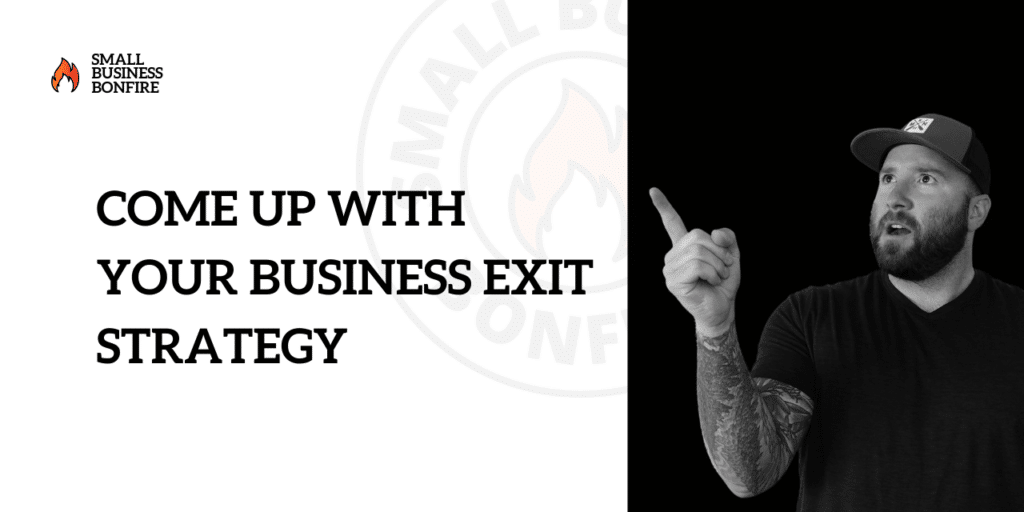
Starting a small business is an exciting time, but it’s also important to consider your exit strategy.
I know, I know you haven’t even started a business yet, let alone thought about exiting one!
For me, coming up with your exit strategy has several advantages.
- It gives you a goal to reach for
- It helps inform your business model
- It helps dictate your hiring approach
Trust me, having a clear exit enables you to stay hyper-focused on your goals.
You don’t say, “I want to lose weight,” you say, “I’d like to lose 40 pounds and get down to 180 pounds.”
Types of Exit Strategies
There are six common exit strategies that we are going to take a closer look at.
Private Sale
A private sale involves selling your business to a third party.
This can be an individual or a group of investors, usually done for financial gain.
You must prepare financial statements and other documents that potential buyers may request and put a value on the business.
Pros:
- You will get paid for the sale of your business
- You will have a say in who buys your business and how the deal is structured
Cons:
- The process can be lengthy and complex
- It may take some time to find a buyer willing to pay the desired price
When I sold my business for the most money I could (in a private sale for multiple seven figures), it took roughly four years to build and six months to sell.
Again, one of the reasons you start with the exit in mind is not to make the same mistakes I did when selling.
This included:
- Not focusing as much as I should have on EBITDA
- Hiring too many employees when subcontractors would work
Selling Your Stake to a Partner/Investor
If you have a partner or investor in your business, you may choose to sell them your stake.
This is typically done if the other party is willing to take over the running of the business.
The idea is that the partner/investor can take over and manage the business while you get paid for your share.
Pros:
- You will receive financial compensation for your stake in the business
- The transition process is typically smoother than a private sale, as both parties are already familiar with the business
Cons:
- You will no longer have control over the business
- You may not receive as much money from a partner/investor compared to a private sale
Family Succession
Family succession is when you pass your business on to a family member, such as a son or daughter.
This is often done if the family member has the skills and resources needed to take over and manage the business.
Pros:
- The transition process is typically smoother, as the family member will already be familiar with the business
- You can rest assured knowing that your business will remain within the family
Cons:
- It may be challenging to decide which family member should take over the company and how the transition should be handled
- Your family member may not have the same vision or goals as you, which could lead to conflict
Employee Buyouts
An employee buyout is when you sell your business to one or more of your employees.
This can benefit both parties, as the employees get to own and manage the business while you receive financial compensation for your stake.
Pros:
- Employees have a vested interest in the business and may be more motivated to succeed
- The transition process is smoother as the employees will already be familiar with the business
Cons:
- The process can be lengthy and complex
- It may be challenging to determine which employee(s) should take over the business and how the transition should be handled
Initial Public Offering (IPO)
An initial public offering (IPO) involves selling a portion of your business to the public via a stock exchange.
This is typically done if your business has grown enough to be publicly traded and can raise large amounts of money for the company.
Pros:
- It can raise large amounts of money for your company
- It can increase the visibility of your business and make it more attractive to investors
Cons:
- The process is lengthy and complex and requires a lot of paperwork
- There are risks associated with publicly trading your business, such as market volatility and bad press
Automating Your Business
Automating your business (my personal favorite) involves using technology, experienced employees, and automation tools to run the business.
You are no longer needed in day-to-day operations but can still be involved in the more significant decisions.
This allows you to step away from the business and still have it run efficiently.
Pros:
- Automation can help you reach more customers and scale faster
- You can continue to generate revenue from your business without having to manage it daily
- It allows you to focus on other projects and opportunities
Cons:
- It can be challenging to find the right systems and technology to automate your business
- There is a learning curve associated with setting up an automated system
- Finding someone to manage the day-to-day operations may be challenging if you are not actively working in the business yourself
But, imagine a business system where you get paid monthly without having to do anything?! Sounds like my kind of life!
Where Should You Be After Choosing Your Exit Strategy?
- At this stage you have a clear exit strategy (goal) in mind for your business
5. Write a One Page Business Plan
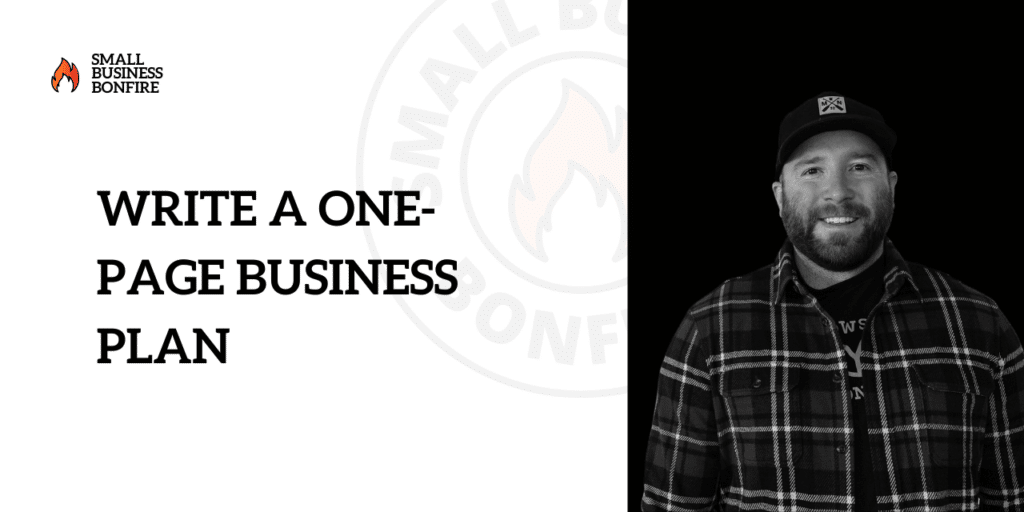
Once you’ve thought through your business idea and have chosen an exit strategy, it’s time to write a one-page business plan.
A one-page business plan outlines your business goals, strategies, and objectives.
Your business plan should provide a high-level overview of your goals and objectives. Think of it as a roadmap to help you stay focused and on track.
Pro Tip: You DO NOT need a 75-page business plan (unless you’re getting a bank loan). I think a long business plan is an outdated (and useless) exercise to go through.
A long business plan never services first contact with your customers.
How to Write a One-Page Business Plan
Writing a one-page business plan doesn’t have to be overwhelming for business owners.
I’ve created a simple one-page business plan template you can download for free on our resources section.
Let’s take a look at what should be included in your plan.
Step 1: Company Description
The first step is to provide a brief description of your company.
This should include your mission statement, targeted customer base, industry, and competitive advantages.
This section should be short, sweet, and to the point (1-2 sentences) and written in a way that will be easy to understand and capture the reader’s attention.
Step 2: Problem
The next step is to clearly define the problem that your business is trying to solve.
This should include an overview of the following:
- Current Market
- Competitor Analysis
- Customer Insights
You should also provide examples of existing solutions that have failed to meet customer needs.
Step 3: Solution
The third step is to provide an overview of your solution.
Your solution should:
- Be unique and offer customers something that current solutions lack
- Include a breakdown of any products or services you plan to offer
- Address the problem better than existing solutions
- Provide a timeline for when the solution will be available to customers
Step 4: Secret Sauce
The fourth step is to provide an overview of what makes your small business unique.
This could include automated processes, proprietary technology, or a unique customer experience.
It should set you apart from the competition and give customers a reason to choose your business over others.
Step 5: How You Make Money
The fifth step is to outline how you plan to make money.
This should include any potential revenue sources, such as:
- Advertising/Affiliate Income
- Subscriptions
- Sales/Services Revenue
Additionally, consider pricing models and any other strategies or tactics that could generate income for your business.
Step 6: Go to Market Plan
The sixth step is to provide an overview of your go-to-market plan.
This should include any tactics you plan to use to reach potential customers, such as marketing campaigns, public relations initiatives, or partnerships.
You should also outline the channels you plan to use (social media, email lists, etc.) and any events or activities you plan to attend.
Step 7: Who’s Already Doing It
The seventh step is to outline any competitors already in the market.
This should include a brief overview of each competitor, their strengths and weaknesses, and how you plan to differentiate yourself from them.
Step 8: Dream Team
The eighth step is to provide an overview of who you have on your team.
This should include any employees, advisors, or partners that can help you reach your goals.
You’ll also want to outline how each individual contributes to the business and their role in executing the plan.
Step 9: Required Funding
The ninth step is to provide a breakdown of the funds required to reach your goals.
This should include:
- Any capital investments, such as office space or equipment
- An estimate or budget for any marketing and advertising initiatives
- A timeline for when funds will be needed and how they will be used
Step 10: BHAG
The tenth and final step is to outline your Big Hairy Audacious Goal (BHAG). Sound funny? Just think of it as your big, long-term goal for the business.
This could include expanding to a new market or launching a disruptive product.
This should be a measurable goal you aim for in the next 1-5 years. It should stretch your team but still be attainable with hard work and dedication.
You can’t start a business and not have a goal, so make sure you think big and dream even bigger!
Pro Tip: This is also a great place to have your exit strategy!
Where Should You Be After Writing a One Page Business Plan
- At this stage it should be easy to write your one page business plan
- At this stage you have shared your one page business plan with your potential team/partners
6. Determine Your Legal Business Structure
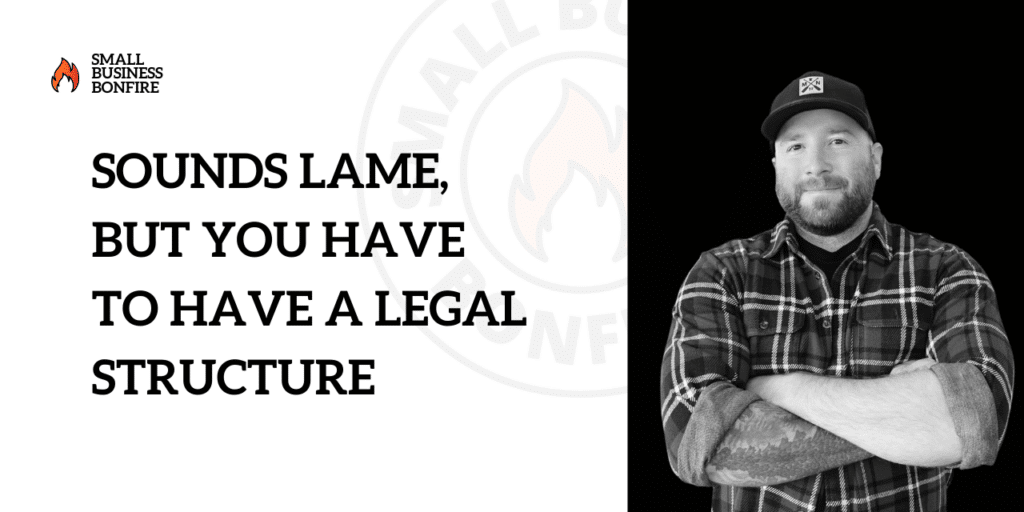
See, many people (and BS articles you’ll read online) tell you to START with setting up an LLC. I think that’s dumb.
Don’t set up a business legally until you’re sure it will fly.
However, at this stage, you’re ready to set up a legal entity.
If you want to save time. Setup an LLC. LLCs are the typical legal structures set up by Small businesses all over the country.
Types of Business Legal Structure
There are several types of business legal structures, including:
- Limited Liability Company (LLC)
- Partnership
- Sole Proprietorship
- Corporation
- S-Corporation
Each type has benefits and drawbacks, so you’ll want to weigh your options carefully.
Let’s take a closer look at each one!
Limited Liability Company (LLC)
A Limited Liability Company (LLC) is a type of business structure that provides personal liability protection for its owners, called members.
An LLC is a pass-through entity, meaning that it does not pay taxes on business income.
Instead, the profits and losses are passed through to the LLC members (owners), who then report them on their tax returns.
Pros:
- Personal liability protection for members
- Flexible management structure
- Easy to set up and maintain
Cons:
- Limited access to business financing
- Members may be personally liable for debts and obligations of the LLC
- The death or bankruptcy of a member can dissolve the LLC
Partnership
A partnership is a business structure comprising two or more individuals or entities known as partners.
It can be general (where all partners are liable for the business debts and obligations) or limited (where only one partner is liable).
Like an LLC, a partnership does not pay taxes on its income. Instead, the profits and losses are passed through to the individual partners, who report them on their tax returns.
Pros:
- Easy to set up and maintain
- Flexible management structure
- Tax benefits from sharing profits and losses with other partners
Cons:
- General partners are personally liable for business debts and obligations
- Collaborative work and managing shared decision-making with multiple partners can be challenging
Sole Proprietorship
A sole proprietorship is a business owned and operated by one person.
The sole proprietor is responsible for all business aspects, including making decisions and managing operations.
This type of entity does not provide the owner with any personal liability protection, as they are personally liable for all debts and liabilities of the business.
Pros:
- Easy to set up and maintain
- Low overhead costs
- The sole proprietor is free to make business decisions without consulting other owners or partners
Cons:
- Unlimited personal liability for the sole proprietor
- Limited access to financing options, as lenders may require collateral
- More challenging to raise capital or expand the business
Corporation
A corporation is a legal entity separate from its owners (shareholders) and managers (directors). It is legally responsible for all debts and liabilities of the business.
Corporations are taxed separately from their shareholders, meaning the company pays taxes on profits generated by the business AND pays taxes to the ownership (double taxation).
Pros:
- Shareholders are not personally liable for business debts and obligations
- Easier access to financing options (banks may require shareholders’ assets as collateral)
- Ability to raise capital through equity sales or issuing bonds
Cons:
- Higher cost of setup and maintenance than other structures
- Complex decisions must be made about corporate structure and governance
- Corporate profits are taxed twice: once at the company level and again at the shareholder level (through dividends)
S-Corporation
An S-Corporation is a type of corporation that has elected to be taxed under Subchapter S of the Internal Revenue Code.
This allows the company to pass income, losses, and deductions to its shareholders, who then report them on their tax returns.
The pros and cons are the same as a traditional corporation, except for the following.
Pros:
- Shareholders are not taxed on corporate income
Cons:
- Strict regulations and requirements for S-Corps
- Limited to 100 shareholders or less
Where Should You Be After Choosing a Legal Structure
- At this stage you have researched each legal structure
- At this stage you've realized an LLC is probably the best choice for first time business owners
7. Register with the Government
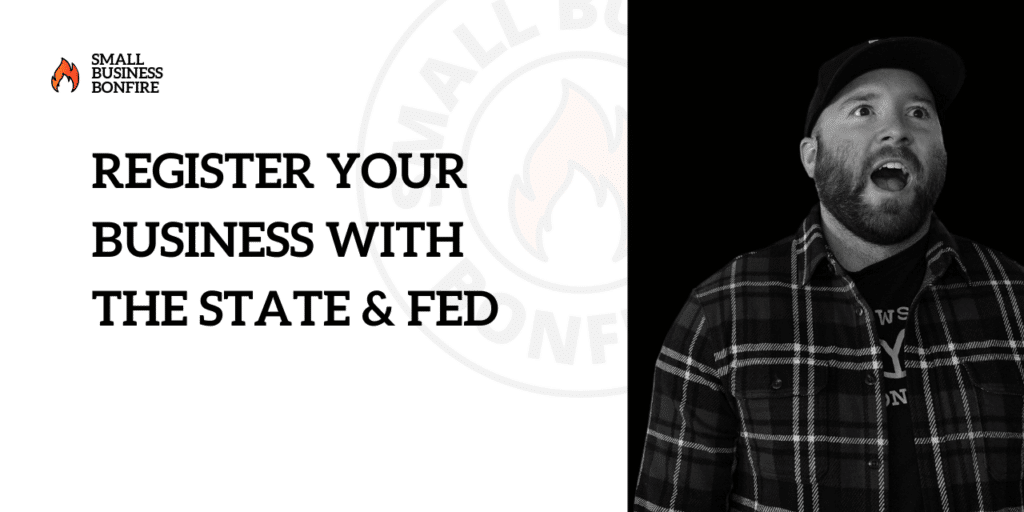
Once you’ve decided on a business structure, it’s time to register with the government.
Depending on your state or country, this process will vary in length and complexity.
Step 1: Choose a Business Name
The first step in the process is to choose a business name.
A strong business name will help create a strong brand identity and attract potential customers.
Tips for Choosing a Business Name
- Make it unique and easily recognizable to stand out from competitors
- Include keywords that relate to your products or services
- Ensure you can purchase your business name’s URL (or something close to it)
Step 2: Register Your Business
Once you have a business name, the next step is to register your business with the state or local government.
This process will require filing paperwork and paying fees.
The amount of paperwork and fees required depends on your chosen business structure.
My preferred (and the most accessible/best) business structure is an LLC, so we’ll discuss it below.
How to Register a Business Name
Registering a business is often called “forming” or “incorporating” your business.
Every state has its own set of rules and regulations, so it is essential to research the process before moving forward.
Here’s the process for setting up (or registering) an LLC.
How to Start an LLC
Setting up an LLC will involve filing articles of organization with your state.
This document is also known as a “certificate of formation” or “certificate of incorporation.”
The articles of organization must include the following:
- The name and address of the LLC
- The names and addresses of the members
- The purpose of the LLC
- How the LLC will be managed
To find where to set up an LLC, you must go to your state’s Secretary of State page. You can find it by typing “Your State + Secretary of State.” E.G., Minnesota Secretary of State in Google.
From there, it’s a sinch. Just fill out the paperwork, pay the fee, and BOOM! You’ve got a legit business.
Get an EIN Number
Once you’ve registered your business name, you must get an Employer Identification Number (EIN) from the Internal Revenue Service (IRS).
An EIN is a unique number the IRS uses to identify businesses and their owners for tax purposes.
It’s also required to run most aspects of a business, such as opening a bank account, applying for loan, getting a business credit card, etc.
Where Should You Be After Registering with the Government
- At this stage you have went to the secretary of states website
- At this stage you've chosen a business name
- At this stage you've registered your LLC
- At this stage you've gotten your federal EIN number for taxes
8. Get a Bank Account and Build a Business Budget
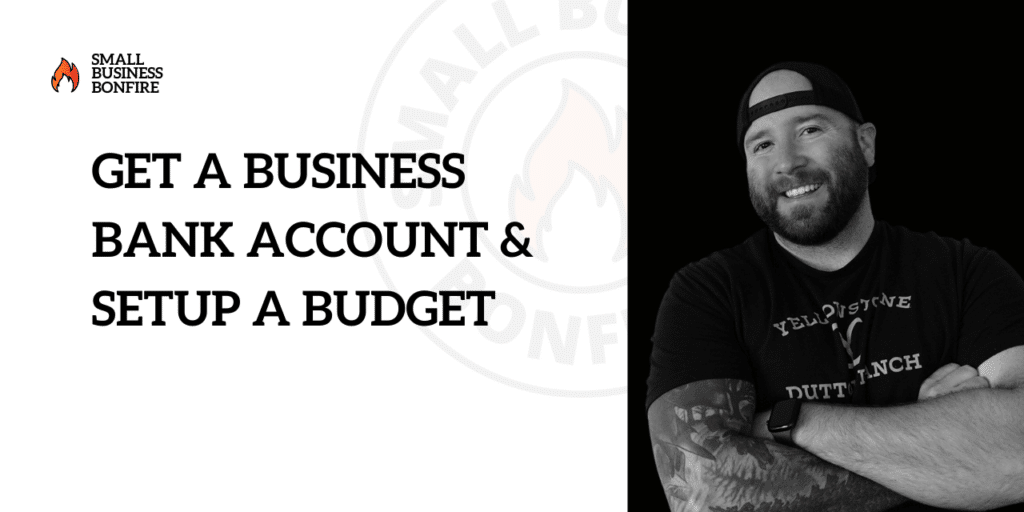
Once your small business is registered, it’s time to open a business bank account and build a business budget.
Step 1: Open a Business Bank Account
It’s essential to have a separate business bank account.
Not only does it help keep your financial records clear, but it also establishes professional credibility.
By separating your business and personal finances, you can easily manage your business expenses, track your income, and make tax preparation a breeze.
Step 2: Determine Your Break-Even Point
The break-even point is the amount of income where your business is neither making a profit nor losing money.
Finding your break-even point helps you determine how much revenue you need to generate to cover your expenses and start making a profit.
To calculate the break-even point for your business, follow these steps:
- Determine your fixed costs (e.g., rent, insurance, etc.)
- Calculate your variable costs (e.g., cost of goods sold, shipping costs, etc.)
- Add up all of your expenses to get a total cost figure
- Divide the total cost by the average price of each sale to determine the number of sales you need to make to break even
Step 3: Create a Written Budget
Once you know your break-even point, you can create a business budget.
What is a Business Budget?
A business budget is a financial plan that outlines how much money you need to operate your business each month or year.
It should include both fixed and variable costs, as well as any expected income.
A business budget will help you stay on track and decide where to allocate resources in the future.
How to Create a Business Budget
Creating a business budget is relatively simple.
Here are the steps to get you started:
- Estimate your average monthly revenue
- Subtract all fixed costs
- Subtract all variable costs
- Determine your gross profit (Gross Profit = Total Revenue – (Fixed Costs + Variable Costs))
- Account for net profit and taxes
- Monitor your budget
Once you have a budget, monitor it closely and adjust as needed.
This will help ensure your business stays on track and reaches its goals.
Pro Tip: You don’t have to be fancy with a small business accounting software, Google Sheets will work just fine.
Business Budgeting Benefits
Creating a budget is essential in starting and running a successful small business.
By building a budget and tracking it closely, you can:
- Better manage your cash flow
- Plan for future expenses
- Set goals
- Make informed decisions about resource allocation
Through this process, you will identify areas of improvement and make necessary adjustments to keep your business on the right track.
With ALL of my businesses, I keep and update my budget weekly.
This ensures that I understand (line item by line item) where my cash outflows are going, and how much money the business is bringing in.
Where Should You Be After Setting Up a Bank Account & Creating a Business Budget
- At this stage you have a Small Business Bank account
- At this stage you've setup a business budgeting template and are using it weekly
9. Fund Your Business
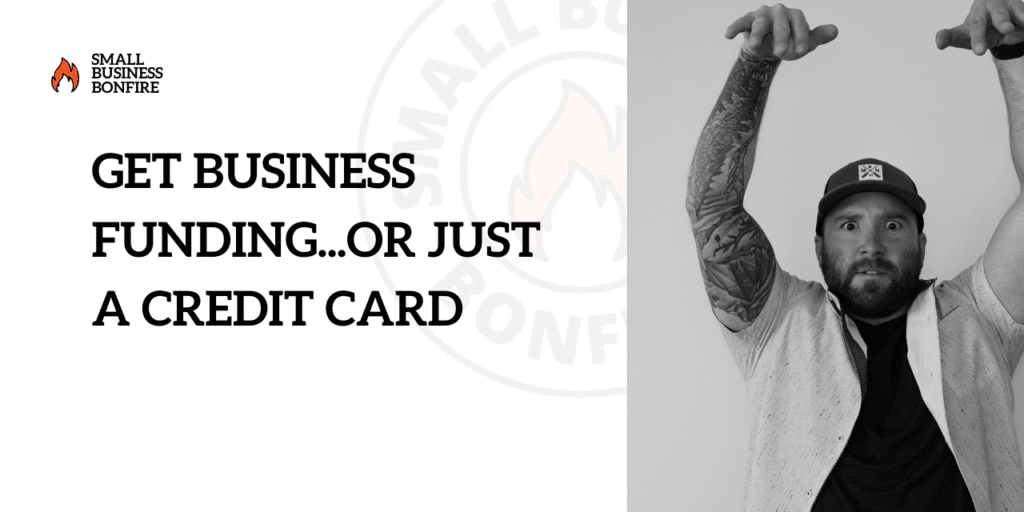
Once you clearly understand your business budget, it’s time to fund your business.
Any new business will require some form of startup capital (even if it’s just a few hundred dollars).
How to Fund Your Business
The steps you need to take to fund your business will depend on your chosen business structure and the amount of capital you need.
- Step 1: Determine how much capital you need
- Step 2: Identify potential sources of funding
- Step 3: Secure financing
Types of Business Funding
Depending on your financial situation, there are several ways to obtain the capital needed for a successful business.
Let’s take a look at some of the most popular funding options.
Bootstrapping
Bootstrapping is an excellent option if you don’t need a lot of capital.
Bootstrapping is a term for self-funding a business using your existing resources. This involves using your savings or credit cards to finance your business.
This is a great way to start with minimal risk and cost. However, it can be challenging to scale your business without additional funding.
Pros:
- Minimal risk
- Low cost
- High potential for Return on Investment (ROI)
Cons:
- Limited capital
- Difficulty scaling without additional funding
Friends and Family
Friends and family are a great option if you need additional capital.
Reaching out to your network is an effective way to secure funding without taking on debt or giving up equity in your business.
Pros:
- No debt or equity required
- Low-interest rates, if any
- Flexible repayment terms
Cons:
- Potential relationship issues if the loan isn’t repaid on time
- Limited capital
Business Line of Credit
A business line of credit is another financing option for small businesses.
This type of loan allows you to borrow a specific amount from a lender and repay it as needed, with interest only due on the amount used.
This makes it ideal for covering short-term expenses when cash flow is tight.
Pros:
- Flexible repayment terms
- Low-interest rates
- Immediate access to funds
Cons:
- Higher rates than traditional business loans
Business Credit Cards
A business credit card can be an excellent option for small businesses.
Business credit cards have higher limits and more flexible terms than consumer credit cards.
They also offer additional benefits such as rewards programs and cash-back offers.
Pros:
- Flexible repayment terms
- Low-interest rates (if you pay your balance in full each month)
- Rewards and cash-back programs
Cons:
- High-interest rates (if you don’t pay your balance in full)
- Limited capital
Crowdfunding Sites
Crowdfunding sites like Kickstarter and GoFundMe are also becoming popular business funding sources.
These sites allow you to create a campaign to raise money for your business from many people.
Pros:
- Low-cost and low risk
- Fast access to funds
- Valuable feedback from potential customers
Cons:
- Limited capital
- Difficult to scale without additional funding
Bank Loans
Bank loans are one of the most traditional sources of business funding.
These loans have relatively low-interest rates and allow you to borrow larger amounts than other financing options.
Pros:
- Low-interest rates
- Flexible repayment terms
- Immediate access to funds
Cons:
- Lengthy application process
- Collateral required for larger loans
Angel Investors
Angel investors are another source of business funding. Angel investors offer money in exchange for equity in your company.
This is ideal if you need a large amount of capital and don’t want to take on debt.
Pros:
- Access to larger amounts of capital
- No debt or interest payments
- Valuable strategic advice from investors
Cons:
- Loss of equity in your business
- Difficult to find the right investor
Venture Capital
Venture capital (VC) is another source of funding for businesses. Venture capitalists provide money in exchange for equity and a share of the profits.
The only difference between venture capital and angel investors is that venture capital investments tend to be larger.
This type of funding is best suited for growing businesses with high-growth potential.
Pros:
- Access to larger amounts of capital
- No debt or interest payments
- Valuable strategic advice from investors
Cons:
- Loss of equity in your business
- Difficult to find the right investor
Where Should You Be After Funding Your Business
- At this stage you have chosen how you'll be funding expenses in your business
- At this stage you've talked with investors, applied for credit cards, or gotten a loan
10. Get the Necessary Insurance
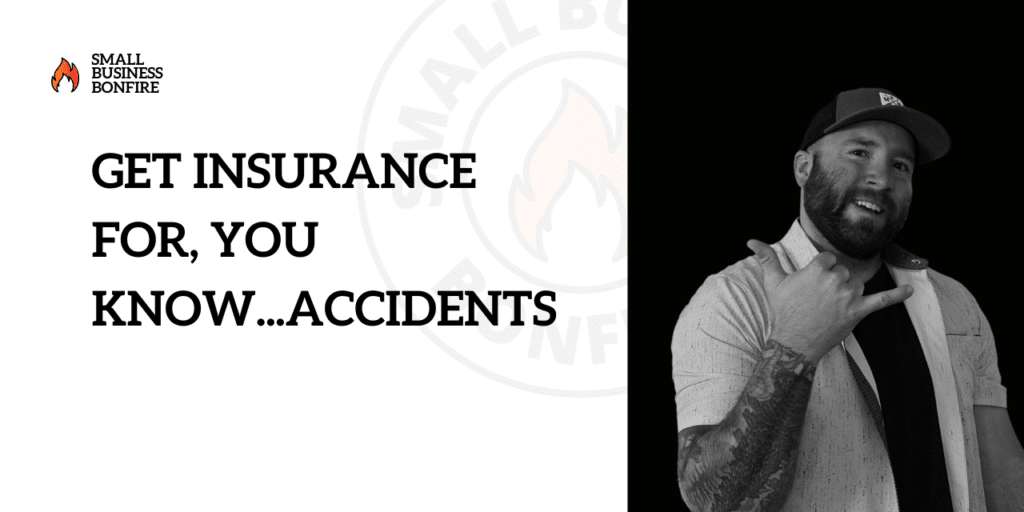
Insurance is important to protect your assets no matter what type of business you’re running.
What is Business Insurance?
Business insurance is insurance that covers risks associated with running a business.
It is an essential step in protecting your business from potential losses.
It covers a variety of risks, including:
- Property damage
- Lawsuits
- Work-related injuries
Depending on the industry you’re in, you should consider several types of business insurance.
Types of Business Insurance
The types of insurance needed for a small business will depend on the nature and size of the company.
Let’s look at some of the most popular types of business insurance.
General Liability Insurance
General liability insurance (GLI) covers your business against third-party claims of bodily injury, property damage, and personal/advertising injury.
It also provides coverage for legal costs associated with defending a lawsuit.
This is the most basic form of business insurance and should be included in any comprehensive business insurance policy.
Commercial Property Insurance
Commercial property insurance covers your business if its physical assets, such as buildings or equipment, are damaged.
This type of insurance can cover the following:
- Losses caused by theft
- Losses caused by vandalism
- Losses caused by natural disasters
Business Income Insurance
Business income insurance covers your business if you cannot generate revenue due to an unforeseen event.
It can cover losses from interruptions caused by:
- Natural disasters
- Power outages
- Damage to the building or equipment
Professional Liability Insurance
Professional liability insurance, also known as errors and omissions (E&O) insurance, covers your business against claims of negligence or malpractice.
This type of insurance is essential for professions such as law, accounting, consulting, and other service-based industries.
Workers Compensation Insurance
Workers’ compensation insurance is required in many states. It helps cover medical costs and lost wages for employees who are injured or become ill on the job. when
It also covers legal fees if an employee pursues a claim against your business for an injury or illness sustained while working.
When you hire employees, you should look into obtaining workers’ compensation insurance.
Data Breach Insurance
Data breach insurance protects your business from the financial losses caused by a breach.
This type of insurance can cover any costs associated with informing customers, legal fees, and credit monitoring services for affected individuals
Commercial Umbrella Insurance
Commercial umbrella insurance is liability insurance that provides additional protection in case of a lawsuit or claim.
It kicks in only after all other policies have been exhausted.
This can be an important form of protection for businesses with significant assets.
Commercial Auto Insurance
Commercial auto insurance covers vehicles used for business purposes, such as cars, vans, and trucks.
It provides coverage for damages caused by accidents and theft of the vehicle. It can also cover medical costs for passengers injured in an accident.
It is important to have the right type and amount of commercial auto insurance based on your business needs.
What Insurance Does Your Small Business Need?
The type and amount of insurance a small business needs will depend on its type and size.
When you start a business, consider the following:
- What types of risks does your business face?
- How much do you have to protect?
- Are there any gaps in coverage that need to be filled?
Take the time to research the different types of insurance available and what each type covers.
It’s best to get a policy tailored to your small business needs. Talk with an insurance agent to get the best coverage for your business.
Finally, make sure you have the necessary paperwork in place and stay up-to-date on changes to the law that could affect your small business.
A comprehensive insurance plan can help protect your small business against unexpected losses and keep it running smoothly.
Where Should You Be After Funding Your Business
- At this stage you have spoken to an insurance agent and purchased an insurance policy based on your needs
11. Get the Right Business Software
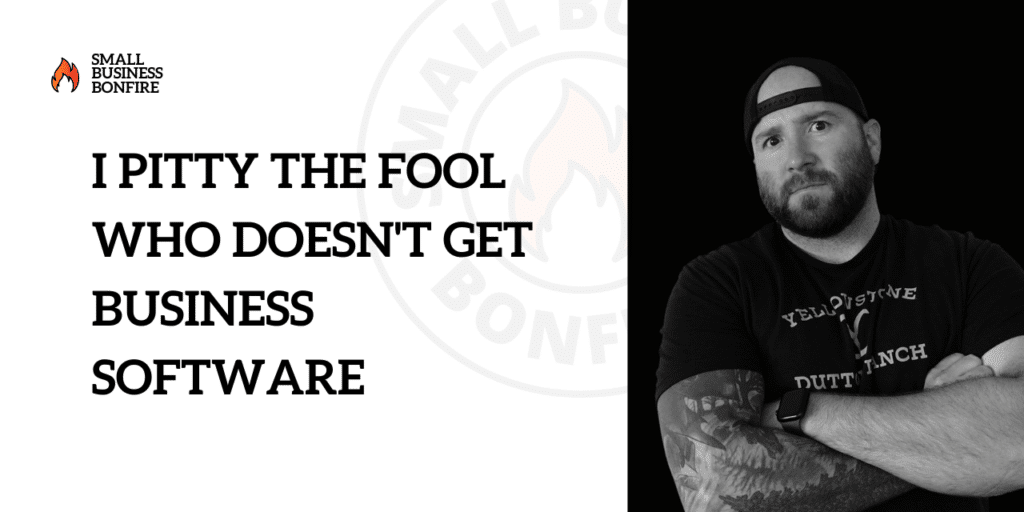
When starting a business, you must invest in the right tools and technology to ensure your business runs efficiently.
You don’t want to invest in tools you don’t need, but you also don’t want to skimp on the essential tools your small business needs.
Before investing in any tool or technology, it is essential to consider what your business needs and what features are most important.
Here is a list of (what I think) is the most essential software categories you should consider when first starting a business.
CRM Software
CRM (Customer Relationship Management) software is essential for businesses of any size.
CRM software is utilized for the following purposes:
- Centralizing and managing customer information
- Monitoring sales activities
- Automating marketing processes
- Establishing and maintaining customer relationships
This is important for businesses that want to build long-term customer relationships.
FYI – We’ve compiled a list of the best CRM software for Small Businesses here.
Accounting Software
Accounting software is essential for keeping track of your business finances and managing cash flow.
It lets you easily track expenses, invoices, payments, and more. This can help you stay organized and ensure everything is accounted for correctly.
As a small business owner, accurate financial records are important for compliance and tax filing.
Project Management Software
Project management software can help you manage your projects more efficiently.
It allows you to:
- Track tasks
- Assign team members to projects
- Monitor progress along the way
This helps ensure that your projects are completed on time and within budget.
Team Communication Software
Having the right team communication software is essential for keeping everyone on the same page and staying connected.
Communication software typically offers the following features:
- Facilitates efficient communication and seamless collaboration with team members
- Enables secure document sharing
- Centralizes task and project management
- Supports virtual meetings, video conferencing, and other functionalities
Pro Tip: My favorite communication software of all time is Slack. Know it, love it.
Where Should You Be After Getting Business Software
- At this stage you have setup a CRM
- At this stage you have an accounting software picked out
- At this stage you have a project management software (unless it's included with your CRM)
- At this stage you've realized the power of Slack for internal/external communication
12. Market Your Business
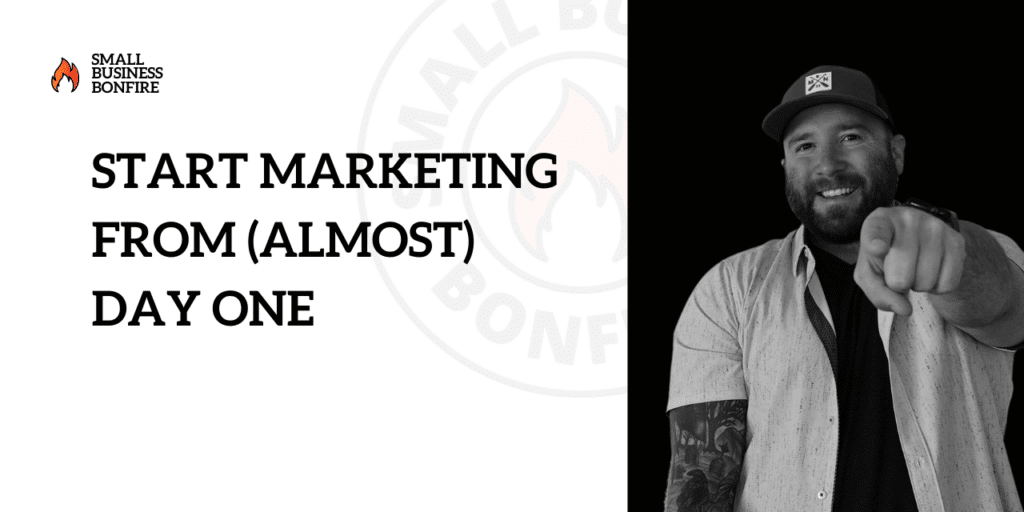
Once you have established your small business, it is important to start marketing and promoting it.
Any successful business needs customers, and marketing can help you reach them.
Low key brag, but I did start, scale, and exit a marketing agency, so I know a bit about this step…
Step 1: Create a Logo
Your logo is the face of your business and should reflect who you are.
This will be used on all your marketing materials, including your website, social media accounts, business cards, and more.
Take time to create a unique logo that stands out from the competition.
Consider hiring a professional designer if necessary. You can easily find someone on platforms like Fiverr or Upwork.
Pro Tip: Don’t spend over a few hundred dollars on a logo. You can always re-brand later!
Step 2: Build a Website
Having a website is essential for any business. It helps you establish an online presence and reach more potential customers.
You can quickly build your website using platforms like WordPress or Squarespace. There are also many hosting services available to help get you started.
Be sure to include relevant information about your business, including:
- About us page
- Contact information
- Services and products offered
- Testimonials from customers
Pro Tip: Use Squarespace to start and then upgrade to WordPress.
Step 3: Optimize for SEO
Search engine optimization (SEO) is essential for businesses that want to be found online.
Optimizing your website for SEO can have several benefits:
- Increased visibility on search engine results pages
- Reaching a wider audience of potential customers
- Improved organic traffic to your website
- Higher chances of attracting targeted leads
Don’t miss out on the opportunity to optimize your website and grow your online presence!
Ensure to include relevant keywords and phrases related to your business in the content on your website.
You should also optimize titles, meta descriptions, URLs, and other site elements for better SEO performance.
Pro Tip: Start with this local SEO guide to help kick things off.
Step 4: Start Content Marketing
Content marketing is a great way to reach and engage your target audience with valuable content.
You can create various content formats to provide helpful information to potential customers, such as:
- Blog posts
- Videos
- Podcasts
- Infographics
- And more!
This helps build trust and position you as an industry expert.
Content marketing can also help you generate more leads and drive conversions for your business.
Pro Tip: Content marketing is great (and this blog post is an example of content marketing) but it does take time. Start today.
Step 5: Develop a Social Media Strategy
Social media is a powerful tool for businesses. It can help you reach more potential customers, build relationships, and increase brand awareness.
You should create accounts on the platforms most relevant to your business and develop a strategy for utilizing each one.
Make sure to post engaging content regularly and use attractive visuals that will draw attention.
You should encourage followers to engage with your posts and respond to comments or messages.
Social media can be a great way to:
- Boost your brand’s visibility
- Reach more customers
- Increase sales
Pro Tip: Social media isn’t a weekly thing; it’s a daily thing. It’s also about consistency. Start posting and don’t stop to see the magic.
Step 6: Build an Email List
Building an email list is a great way to stay connected with existing customers and reach new ones.
You can use this list to send newsletters, special offers, and other promotional content that will keep your customers informed and engaged.
Several platforms like Mailchimp or Constant Contact are available for creating email lists, but my favorite is ConvertKit.
You should also consider using a lead magnet to encourage followers to sign up for your email list. This could be anything from an ebook, webinar, or discount code.
Email lists are great because you’re getting your audience on YOUR platform, not someone else’s (like Facebook or Google).
Pro Tip: Our free resources page is an example of a lead magnet. Check the navigation out on SBB to see.
13. Scale Your Business
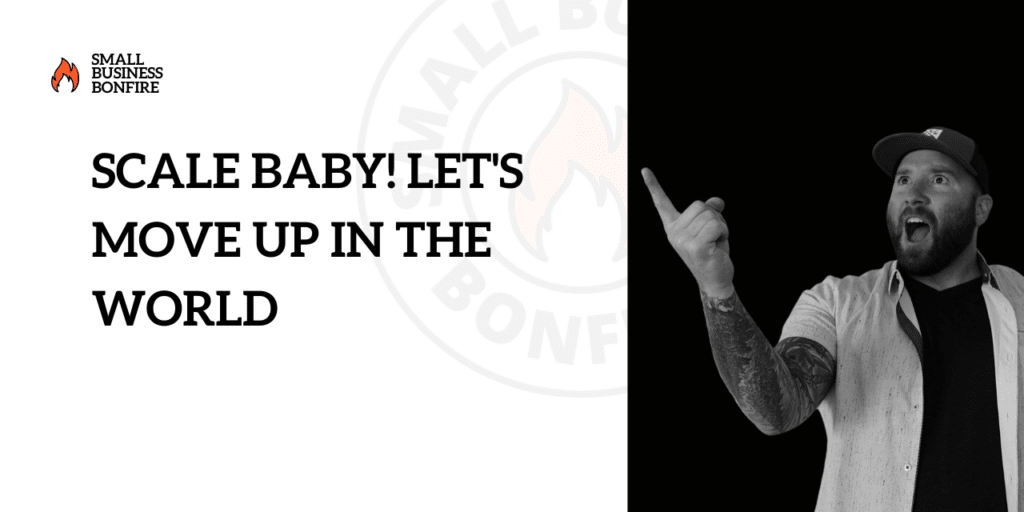
Once you have established your small business, it’s time to start scaling.
This means growing and expanding your business beyond just you.
Step 1: Create SOPs (Standard Operating Procedures)
Creating standard operating procedures (SOPs) is a great way to ensure your business runs smoothly and efficiently.
What is a SOP?
A SOP is a document that outlines the processes and procedures for specific tasks within your business.
You can utilize a SOP for various purposes, such as:
- How to onboard new employees
- How to handle customer complaints
- Scheduling and reporting processes
Benefit of SOPs
Creating SOPs for your business has many benefits, such as:
- Consistent performance of tasks
- Improved accuracy and quality control
- Efficient use of resources
- Reduced training time for new employees
Small business owners should take the time to create SOPs for their businesses to ensure that tasks are completed efficiently and effectively.
How to Create SOPs
Creating SOPs doesn’t have to be complicated. Here are some steps to help you get started:
- Define the process: Outline each task step from start to finish.
- Document the process: Write each step in detail and include any necessary forms or diagrams.
- Get feedback: Ask other employees to review your SOPs and get their input.
- Train the team: Make sure that all relevant personnel are adequately trained on the process outlined in your SOPs.
- Review and update: Regularly review and update your SOPs as needed.
Step 2: Hire Your First Employee
Hiring your first employee is an exciting milestone for many small business owners.
This means you are ready to start expanding and growing your business!
When to Hire Your First Employee
When to hire your first employee depends on different factors such as the size of your business, budget, and needs.
Generally, it’s best to wait until you see a consistent growth pattern before adding additional employees.
There will always be a breaking point when you pay too much for subcontractors, and hiring a full-time employee will be more cost-effective.
How to Hire Your First Employee
- Step 1: Decide the employee status (full-time, part-time, etc.)
- Step 2: Decide your pay periods (weekly, bi-weekly, etc.)
- Step 3: Create a position agreement (not an employee contract)
- Step 4: Find and vet candidates
- Step 5: Conduct interviews (I typically recommend three max)
- Step 6: Hire your employee for a trial period
- Step 7: Hire them full-time (if applicable) or start over.
Pro Tip: Read my complete guide on how to hire employees here.
Step 3: Onboard Your Employees
The next step in the process is onboarding your employees.
Onboarding is much easier when you’ve created an onboarding SOP (see above).
Typically, this involves training on company-wide processes and individual position responsibilities.
Again, I can’t stress this enough. When you have full SOPs for the position you’re hiring, this will go WAY smoother.
14. Monthly Refinement
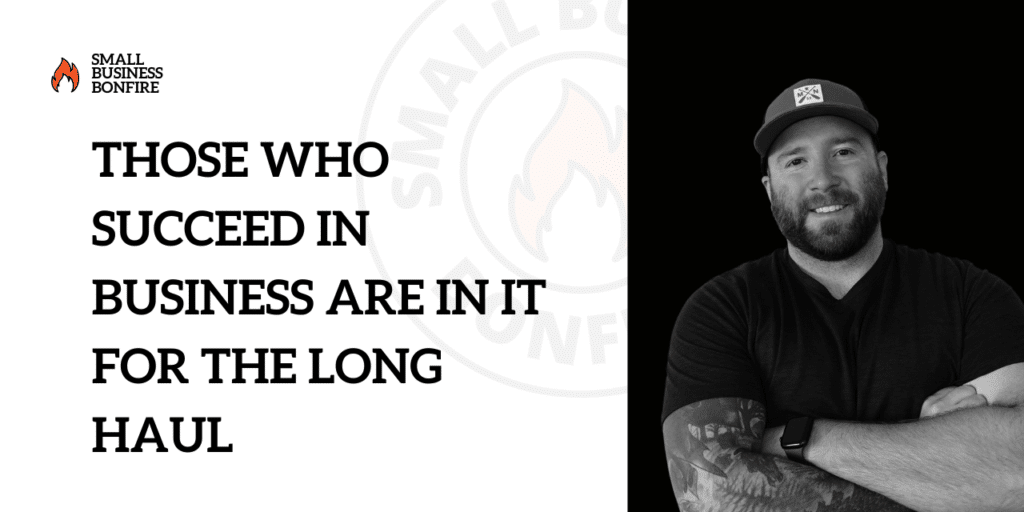
Woohoo! You made it this far. You have the basics of starting and scaling your business down pat.
Now it’s time to start refining your processes so that you can make improvements each month and be more successful.
Step 1: Track KPIs (Key Performance Indicators) Monthly
Key performance indicators (KPIs) are important metrics that help you measure the success of your business.
What is a KPI?
A KPI is a metric that measures the performance of your business in relation to its goals.
Examples of KPIs include:
- Sales numbers
- Traffic to your website
- Customer retention rate
- How many late nights you’ve spent up this far
- Etc.
How to Track KPIs?
Tracking KPIs is an essential step for monitoring the progress of your business.
Here are some tips to help you get started:
- Determine which KPIs are most relevant to your business
- Set goals for each KPI
- Track and analyze the data regularly
- Adjust your strategy as needed
Step 2: Continue to Do Accounting
Doing your accounting and finances is an essential part of running a successful business.
You should consistently track your income and expenses, track taxes, and manage cash flow.
By doing this every month, you can get a better handle on the financial health of your small business and make adjustments to ensure you remain profitable.
The more you become familiar with your business accounting the more you’ll be able to project out into the future and predict future cashflows and seasonalities.
Bonus Tip: Learn the Profit First System
The Profit First system involves setting aside a certain percentage of your monthly income for profits. The rest of your income is used to pay bills, taxes, and other expenses.
This helps ensure you put enough money aside to sustain and grow your business.
By setting aside these funds, you can have peace of mind knowing that your business is making a monthly profit and that there will be enough money to cover any unexpected costs.
By utilizing the Profit First system, you can have better control over your finances and ensure that your small business is on track for long-term success.
Use an Accounting Software
Using accounting software such as Quickbooks, Xero, or FreshBooks can help make managing your finances more straightforward and more efficient.
This type of software enables you to:
- Track income and expenses
- Manage payroll and taxes
- Create financial reports
Using accounting software can save you time and energy by streamlining the process.
Step 3: Build Your Company Culture
Company culture is an important part of every business.
At my businesses, we typically used Traction OR the EOS (Entreprenuers Operating System).
Culture and (EOS) sets the tone for how employees interact with each other and can significantly impact morale and productivity.
Think about the culture you want in your business and how you can foster it.
Some questions you could ask yourself include:
- What values do I want to promote in my business?
- What activities can I organize for the team?
- How can I improve communication with employees?
Creating a positive and supportive work environment ensures that your team is motivated and productive.
Mission, Vision, Core Values
Creating your business’s mission, vision, and core values is a great way to define the culture you want to promote.
By clearly outlining and communicating these elements with employees, you can ensure everyone is on the same page regarding company culture.
This will help set your small business up for long-term success and make sure that everyone is working towards the same goals.
Step 4: Never Stop Growing & Learning
The final (and most important step) in starting and running a business is constant growth.
Business is THE most competitive sport on the planet. If you’re not constantly learning and growing in your skill sets, I guarantee your competition will be.
Keep failing, getting up, dusting yourself off, and learning from your mistakes.
To quote Ray Dalio, “Pain + Reflection = Progress.”
Bottom Line
When you start a business it requires dedication, hard work, and the right strategies.
By following the steps outlined above, you can make sure that your business is on track for long-term success.
Not every business idea will be successful, but with the right steps, you can give yourself the best chance of success.
If we missed anything, let us know in the comments below! Good luck on your journey with your new business!
Newsletter Signup
Join The Leads Field Guide Newsletter for tips, strategies and (free) resources for growing your leads, and closing more deals.

